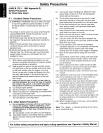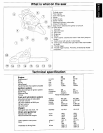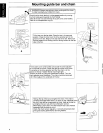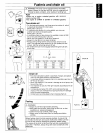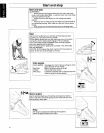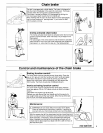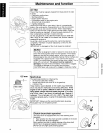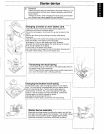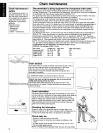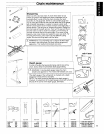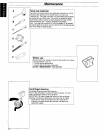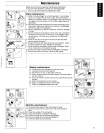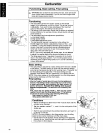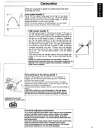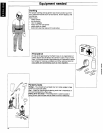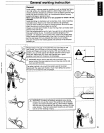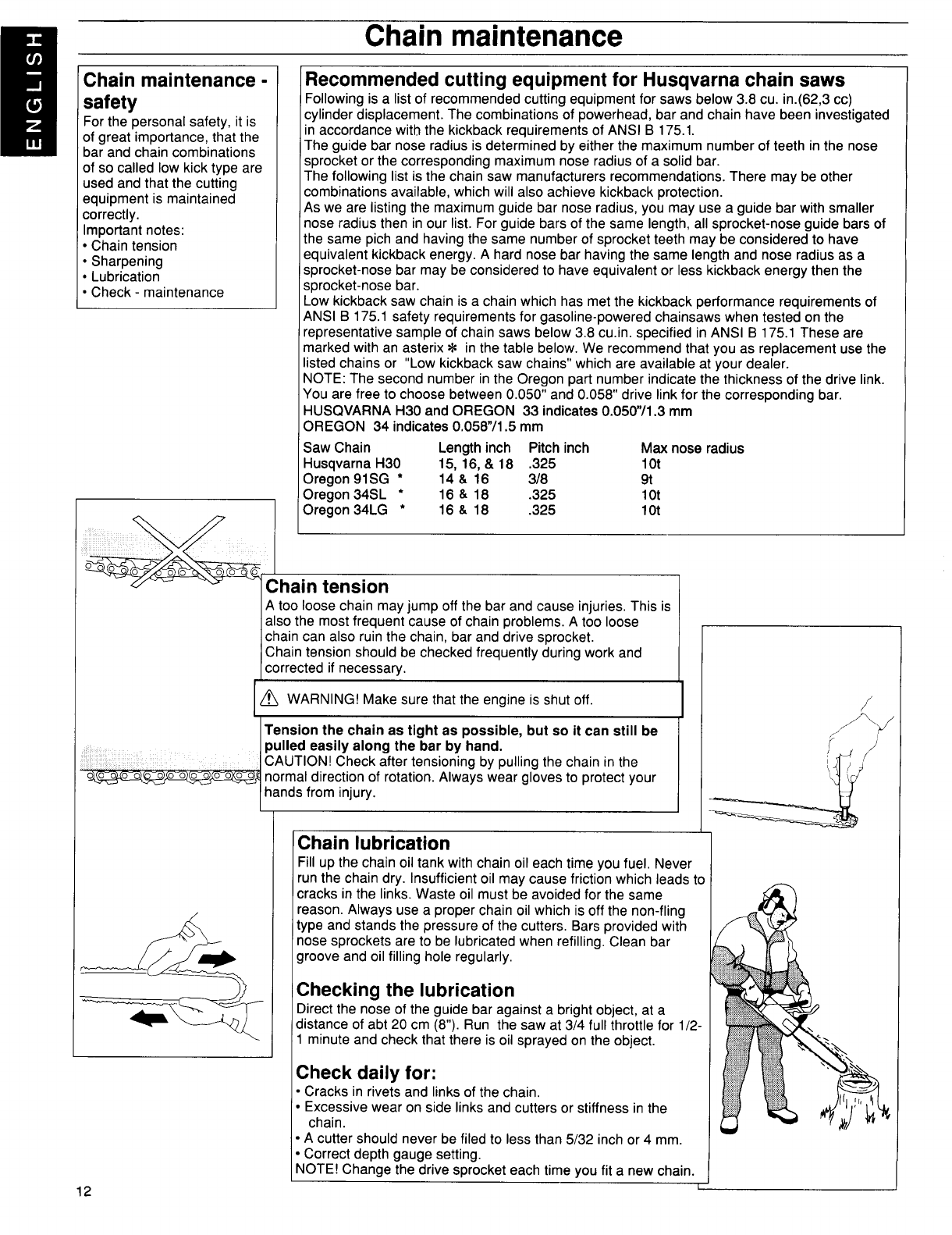
Chain maintenance
Chain maintenance -
safety
For the personal safety, it is
of great importance, that the
bar and chain combinations
of so called low kick type are
used and that the cutting
equipment is maintained
correctly.
Important notes:
● Chain tension
● Sharpening
● Lubrication
● Check - maintenance
I
Recommended cutting equipment for Husqvarna chain saws
Following is a list of recommended cutting equipment for saws below 3.8 cu. in.(62,3 cc)
cylinder displacement. The combinations of powerhead, bar and chain have been investigated
in accordance with the kickback requirements of ANSI B 175.1.
The guide bar nose radius is determined by either the maximum number of teeth in the nose
sprocket or the corresponding maximum nose radius of a solid bar.
The following list is the chain saw manufacturers recommendations. There may be other
combinations available, which will also achieve kickback protection.
As we are listing the maximum guide bar nose radius, you may use a guide bar with smaller
nose radius then in our list. For guide bars of the same length, all sprocket-nose guide bars of
the same pich and having the same number of sprocket teeth may be considered to have
equivalent kickback energy. A hard nose bar having the same length and nose radius as a
sprocket-nose bar may be considered to have equivalent or less kickback energy then the
sprocket-nose bar.
Low kickback saw chain is a chain which has met the kickback performance requirements of
ANSI B 175.1 safety requirements for gasoline-powered chainsaws when tested on the
representative sample of chain saws below 3.8 cu.in. specified in ANSI B 175.1 These are
marked with an asterix X in the table below. We recommend that you as replacement use the
listed chains or “Low kickback saw chains” which are available at your dealer.
NOTE: The second number in the Oregon part number indicate the thickness of the drive link.
You are free to choose between 0.050” and 0.058” drive link for the corresponding bar.
HUSQVARNA H30 and OREGON 33 indicates 0.050’’/1.3 mm
OREGON 34 indicates 0,058”/1.5 mm
Saw Chain
Length inch Pitch inch Max nose radius
Husqvarna H30 15, 16, & 18 .325 lot
Oregon 91SG
●
14 & 16
3/8 9t
Oregon 34SL
●
16 & 18
.325
lot
Oregon 34LG ●
16 & 18 .325 1Ot
Chain tension
I
A too loose chain may jump off the bar and cause injuries, This is
also the most frequent cause of chain problems. A too loose
chain can also ruin the chain, bar and drive sprocket.
Chain tension should be checked frequently during work and
corrected if necessary.
~ WARNING! Make sure that the engine is shut off.
1
Tension the chain as tight as possible, but so it can still be
pulled easily along the bar by hand.
CAUTION! Check after tensioning by pulling the chain in the
o Oao-tj
b-o) fo–oxo-o)frox:o
normal direction of rotation. Always wear gloves to protect your
Ihands from injury.
I
L
4
12
Chain lubrication
Fill up the chain oil tank with chain oil each time you fuel, Never
run the chain dry. Insufficient oil may cause friction which leads to
cracks in the links. Waste oil must be avoided for the same
reason. Always use a proper chain oil which is off the non-fling
type and stands the pressure of the cutters. Bars provided with
nose sprockets are to be lubricated when refilling. Clean bar
groove and oil filling hole regularly,
Checking the lubrication
Direct the nose of the guide bar against a bright object, at a
distance of abt 20 cm (8”). Run the saw at 3/4 full throttle for l/2-
1 minute and check that there is oil sprayed on the object.
Check daily for:
“
Cracks in rivets and links of the chain.
oExcessive wear on side links and cutters or stiffness in the
chain.
● A cutter should never be filed to less than 5/32 inch or 4 mm.
● Correct depth gauge setting.
NOTE! Change the drive sprocket each time you fit a new chain.
(A
/
a
i
\/
-—..



